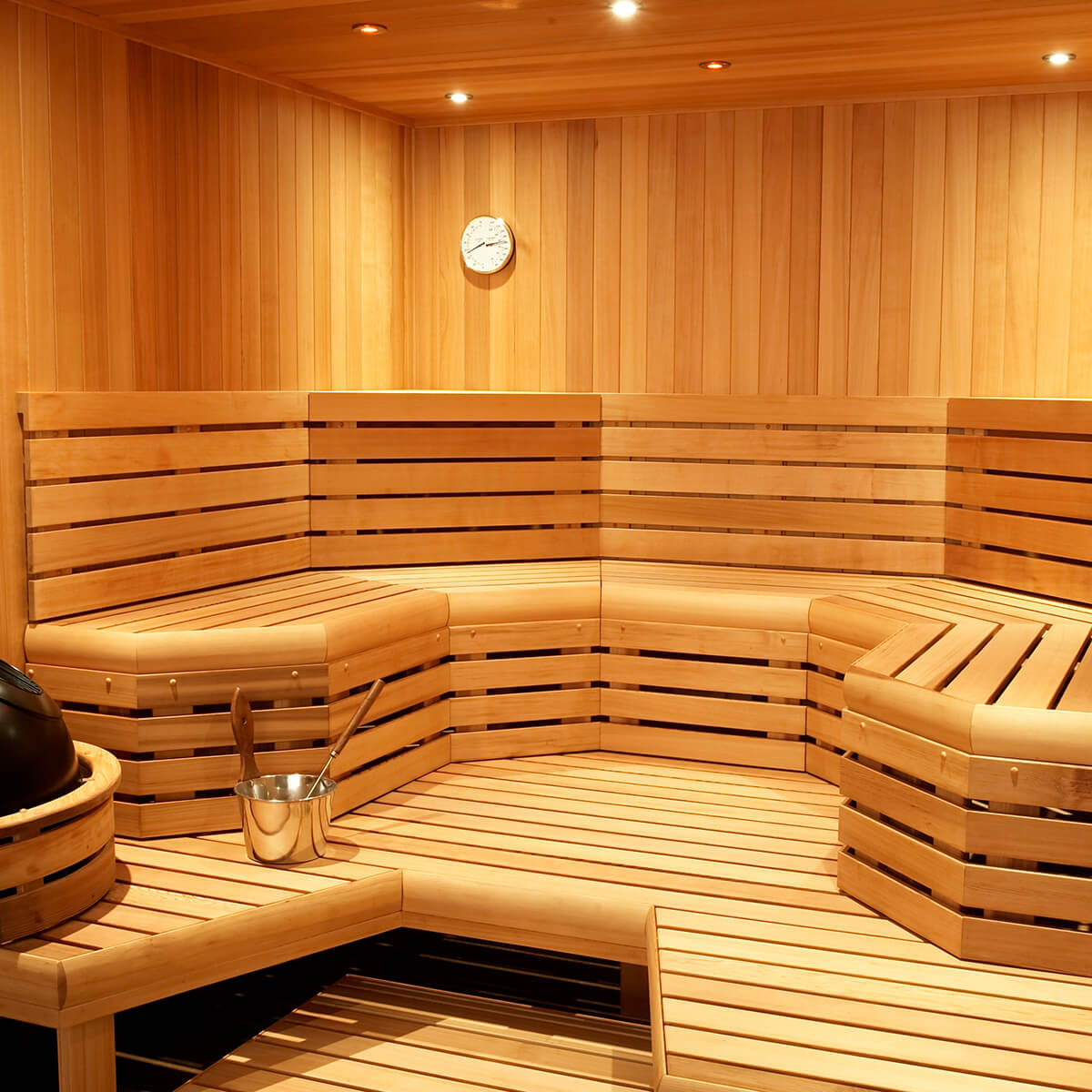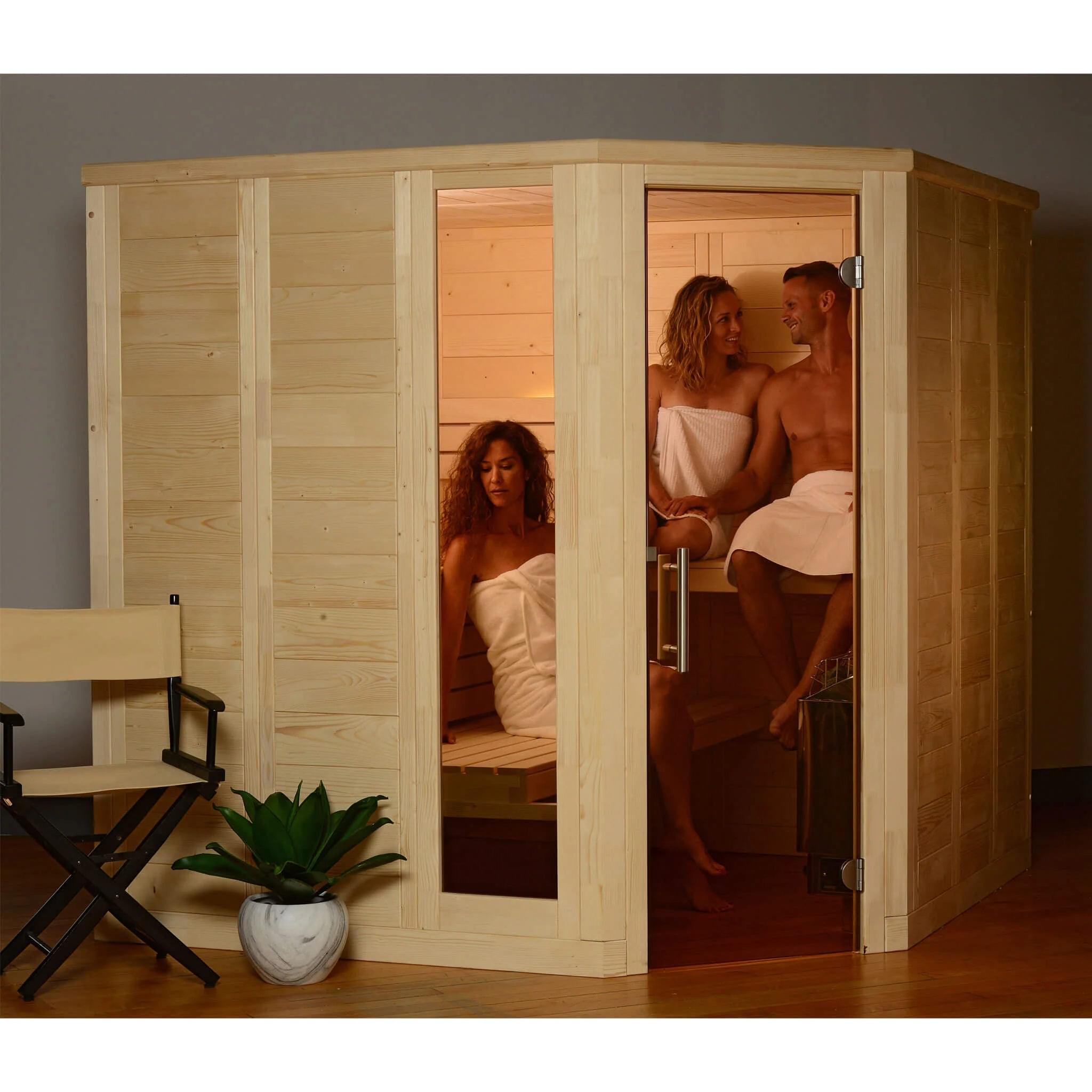How Traditional Sauna can Save You Time, Stress, and Money.
How Traditional Sauna can Save You Time, Stress, and Money.
Blog Article
Traditional Sauna Can Be Fun For Everyone
Table of ContentsExcitement About Traditional SaunaTraditional Sauna Can Be Fun For EveryoneSee This Report on Traditional SaunaTop Guidelines Of Traditional SaunaSome Ideas on Traditional Sauna You Need To Know
A lot of the weight shed in a sauna is water loss and is re-gained upon rehydrating. Nonetheless, without a question sauna can be a vital part of a healthy weight reduction program. To consider the distinctions in between conventional and IR saunas, I will divide these right into proven, academic, and fabricated differences.Thus, the hottest factor in the saunawhich is at the ceiling straight over the sauna heateris typically between 185 and 190 F. Claims that a traditional sauna goes beyond 200 F is just not true and not suitable for electric saunas sold in the United States. The temperature level for a far-infrared sauna is usually set in between 120 and 140 F; however, unlike the conventional sauna, the goal in and IR area is not to attain a heat.
Due to this, the temperature level distinction is nearly unnecessary, because extreme sweating leads to both sauna kinds, but the technique of heating up the body is different. In an IR sauna the bather will certainly feel warm and will certainly sweat a lot, but at a lot reduced temperatures (Traditional Sauna). Therefore, if the objective is to invest longer durations of time in the sauna, the IR sauna is a good selection
When a conventional sauna has been effectively heated up, the sauna walls are warm, the air temperature level has actually accomplished set temperature level and the rocks are super heated. As an interesting side note, the heated walls and the rocks are giving off far-infrared heat, combined with the warmed air, to create an "wrapping up warm".
The 25-Second Trick For Traditional Sauna

When the high temperature level is accomplished, the components cycle on and off to preserve the high temperature. Many traditional sauna individuals appreciate putting water over the rocks to produce heavy steam to elevate sauna moisture levels. The advantages of pouring water over the rocks include: making the space extra comfy, dampening the nasal passages, and permitting the use of aromatherapy by mixing necessary oils with the water.

When the energy goes into the body, it triggers the body temperature level to boost and eventually causes sweating. In an infrared sauna it is essential for the emitters/heaters to remain on almost regularly. Because there is no mass of rocks to retain warm, the sauna will certainly cool if the emitters shut off.
As mentioned over, the sauna bather in an infrared room intends to position himself in front of running emitters to obtain optimal gain from the warmth. The home heating time for the 2 areas can be really different, relying on exactly how the spaces are utilized. For a typical sauna, a bather ought to enable 30-40 minutes for the area to attain a wanted temperature and to appropriately pre-heat the rocks.
What Does Traditional Sauna Do?
A well created sauna will generally attain a temperature of 150-160 F in regarding 30-40 go to this site minutes. For hotter temperature levels, the area may require to warmth for a longer duration.

Standard saunas often tend to be larger (therefore utilize even more electrical energy) than infrared saunas, although conventional saunas are absolutely available in one and two individual sizes. For a two-person standard sauna, 5x6 or 5x7 size is most preferred. The top bench can conveniently seat two or 3 individuals and is likewise long sufficient to rest throughout the sauna session.
Traditional Sauna Fundamentals Explained
The typical expense per kWH of electricity in the united state is about $0.11, so a 4.5 kW heating system will set you back roughly $.50 to compete one hour, if the heater runs continually for one hour. Commonly a sauna heater will compete 75% of the very first hour and 50% of subsequent hours on considering that the components cycle once the established temperature level is achieved.

Lastly, there is a hardly ever discussed difference in the social experience between the two areas. While our society has lost a few of the social go to website benefit of the traditional sauna experience, it can be very socially rewarding (Traditional Sauna). From household time in the sauna, to heart-felt conversations with significant others, to sauna partiesthe standard sauna experience can bring about intimate socializing
Traditional Sauna - An Overview
Most greater end infrared rooms consist of colored light therapy, noise systems and full-glass fronts.
Report this page